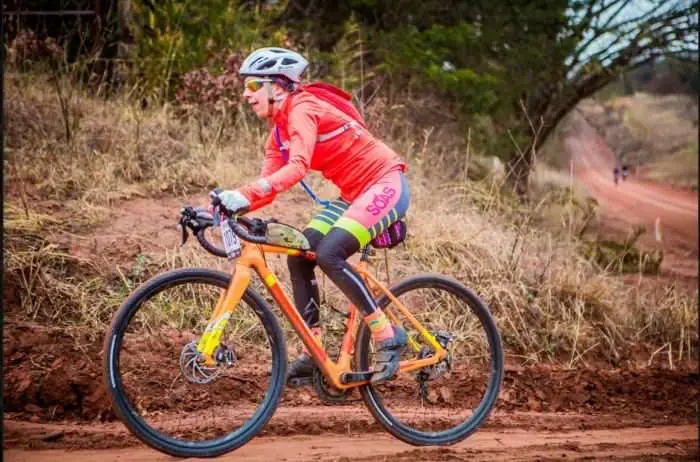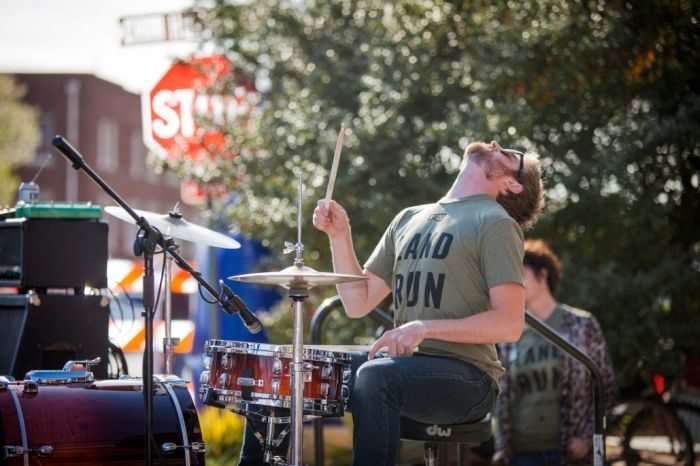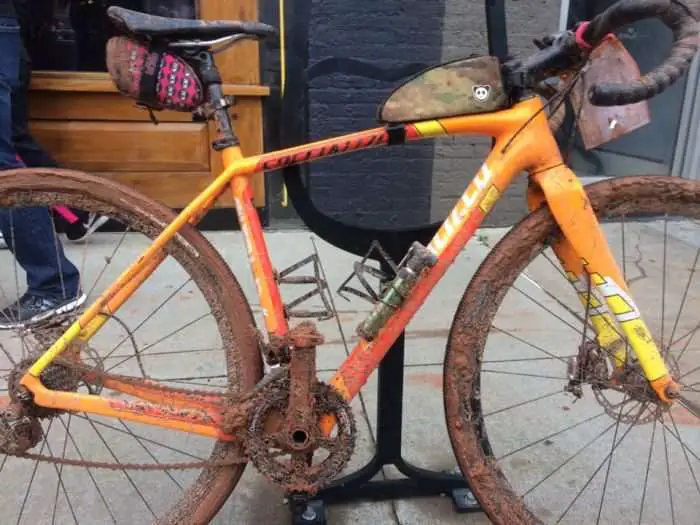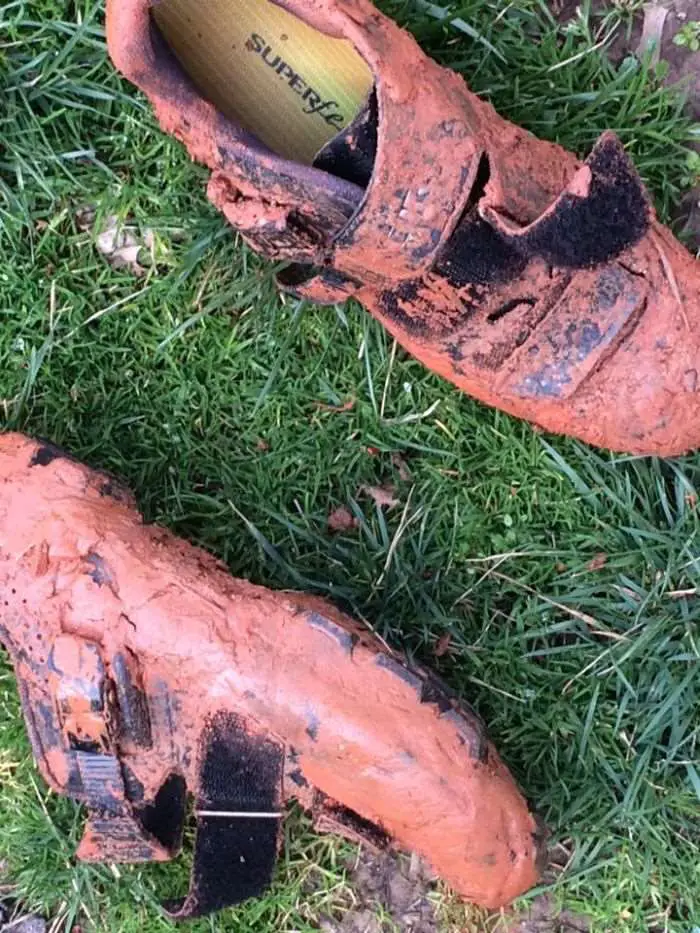
The 7 Stages of DNF: Land Run 100
I am among the 80-something percent that DNF’d Land Run 100, 2017 edition.
While I have numerous did-not-starts due to injury / illness / life, this was only my second DNF (or as JOM put it when I ran into him afterwards, “had to abandon”, which sounds so much better than DNF, especially when said with the Aussie accent). The first was several years ago in a long-distance open water swim (and also due to hypothermia. Clearly I missed “how to keep oneself warm” day at school.)
In the moment, I was fine with it, because it was pretty damn clear that I wasn’t making it past Guthrie, Oklahoma. My brakes were gone, but you can deal with that. My rear shifting was gone, but you can single speed it. But shaking convulsively (such that you’re having trouble controlling your bars, and in any other context would possibly be issued a cycling-under-the-influence) and starting to have a hard time talking is heading into danger territory. So I called it. And I was perfectly OK with it. I was OK waiting (psychologically, at least), I was OK in the rescue jeep… and then suddenly back in Stillwater, near the finish line that wasn’t, for a moment I was not OK. I was still shaking (and was for hours afterwards, even after warm shower, warm clothes, warm everything), but enough mental clarity had returned to question myself.

In one of my other lives (I need to learn this paring-things-down thing Bobby speaks of), I study brains. (the two guys I was hanging out with and waiting for the rescue jeep really appreciated it when I informed them that we were experiencing something called “reward prediction error” and that a subcortical structure deep within our brains called the habenula was firing at that very moment.) In fact, I spent a couple years scanning people’s brains, trying to figure out how we decide, and what makes human beings make one decision versus another.
Uncertainty. Uncertainty plays a major role in how risky or conservative we are, and in the emotions we feel around our decisions. That’s why a DNF like this is harder to wrap your head around from your comfortable heated car after the race… it doesn’t feel so clear. There was no catastrophic event. When your collarbone is literally poking out of your anterior chest wall, it’s much easier to make that call. But was I really that bad off? Did I really need to stop? Did I just wimp out? If I had tried to continue to weave unsteadily for another few hours, would I have ended up in the ER? Probably, but I don’t know.
And then there’s this one – what did all the people who did finish have that I didn’t?
Logically, probably physical things. Truly waterproof jackets (water-resistant my ass, Pearl Izumi). Hot fluids in insulated bottles. Higher total blood volume. Magical unicorn dust.
But logical isn’t what you come up with in the moment. In the moment, it’s like a small identity crisis. Persistence is the cultural norm in gravel, more so than in anything else I’ve experienced. This is who we are. We persist. And if this is your identity – if you are one of the people who persists when others don’t – and then you can’t, it no longer seems just like a failure of your body or your bike, but a failure of you.

Fortunately with a little reflection, logic returns. For as much as I’ve always been great at suffering through hard training sessions, I also used to be terribly risk-averse athletically. And you know what? That was a fucking great DNF. I drove to Oklahoma by myself, slept in a tent for two nights, rolled out with 1,000 other people after a cannon was fired, carried my bike on my back and got muddier than I’ve been in my entire life (inclusive of childhood), and bombed down descents on whatever sketchy line I could sort of see through the approximately one inch of my glasses that weren’t muddy/foggy screaming “NO BRAKES NO BRAKES NO BRAKES” (sorry mom).
10-year-old me would be proud. This is my new standard for success.
So maybe I am unlearning things.
More Land Run100! JOM’s LR100 Race Report – JOM’s LR100 Race Video



Hi Adrienne,
Have you considered that some of this might be a social upbringing type of thing?
Not conclusive, but let me explain my very uneducated theory:
Cycling was traditionally an activity of the lower classes, whether commuting or club racing. Many early cyclists worked physically demanding jobs which toughened them up for the grind of bike racing and training. In fact, my Grandfather who used his commute to work as part of his training, then labored all day and trained more after work. He was one of the leading Aussie cyclists of his day.
Myself?, well I worked a VERY physical job, trained like crazy and raced like a madman, this was all a legacy of being the youngest of four brothers….What do I mean by this? Simply, If I wanted to play, I had to keep up or I’d be left behind. I grew up being accustomed to pushing myself to the very edge, both physically and mentally….”Don’t stop until you drop!”
Now I’m not saying that other less actively employed people don’t have the willpower to endure hardships equally as well, maybe they have to work harder to train their minds and bodies to resist giving up, whereas for the working class underlings like me, it is part of everyday life.
Hey, maybe that’s why my cushy mates won’t get out of bed before sunrise in the dead of Winter, wade through freezing creeks and get covered with mud, and call me crazy?
“Reward prediction error.” Is that a fancy phrase for what Forrest Gump called “Stupid is as stupid does?” Is this why we keep coming back to trash ourselves on shitty roads in shitty weather?
Perhaps Dr. Pain could further illuminate the Crew of Gravel Cyclist as to this
syndrome we all seem to embrace?
Becoming fat adapted allows the body to generate more heat even when cold and soaking wet, just ask your nearest Navy SEAL. Just my $.02. Congrats on a valiant attempt.
Adrienne another nice write up. I am very new to gravel grinding. I have had hypothermia 3 times while road riding though. Once was locally climbing my big mt and sweating like crazy and then a cold rain came in. I was lucky making it off the mt. and warming up at the local Mom and Pops c/store. The worse was on a BikeJournal.com Reunion ride. We had climbed Rise to the Sun road in Glacier NP and was riding over into crossing the Canadian line. A heavy rain came in and I tried sitting it out hunkering under a brick wall at the end of someone’s lane(stupid). Big mistake I was that cold and shivering I could hardly hang on to the handlebars. When I came to the check point/border they took me inside where a medic checked my pulse which was only 50 after riding all day. yowser One thing they told me which worked and has stuck in my mind was go home and wrap yourself in a warm blanket to get your core temp up first before taking a warm shower. It worked. Last but not least was Triple Bypass in Colorado towards the last 10-15 miles it was raining/sleeting/hailing and all of the above. I came to a control/rest stop and a volunteer said “We recommend you don’t go on.” My reply was unless you have a gun in your pocket you better get out of my way. Yes I don’t know when to quit. I had the shakes afterwards but not as bad as Canada. Since those days an old GF bought me a Showers Pass 2.0 rain jacket around $200 I believe on Western Bike and it has been a life saver. It help me finish a rainy 1200k on the Cascades 1200k when towards the end of the ride 50 deg. F now feels like 30 deg. F because of the stress your body has gone thru. You are right in the fact that you don’t have as much blood volume as the guys which doesn’t help you, but keep going out there kicking it and winning some of that nice prize money. The other thing is you learn more from your DNF’S than you do your finishes so just chalk it up as a learning experience.